Cartes Comiques du Colonel Atthalin
“Jeu de cartes comiques” transformation cards designed by Louis Atthalin (1784-1856) and published in 1817.
Louis Marie Baptiste Atthalin’s marvellous set of transformation cards, known in France as “cartes comiques”, was first published in c.1817. The court cards are titled and depict persons from classical literature and history in a scene relating to their life, whereas the numeral cards are untitled and portray a variety of contemporary scenes or imaginary cartoons in extraordinary detail (bearing in mind the constrained size of a playing card) and which transform the humble playing card into fine art.
The scenes on the numeral cards include: soldiers, musical gatherings, farm workers, street performers, nursery scene, sailors' sleeping berth, dancers, boxers, doctor's patients, a caged bear, pipe-smoking arabs, a sedan chair, an alchemist and various allegorical scenes.
Besides being an accomplished artist, watercolourist and lithographer, Baron Louis Atthalin was a French Army officer who received numerous awards and distinctions during his military career, reaching the rank of Lieutenant General. In addition, Atthalin was a Knight in the Royal and Military Order of Saint Louis, a Grand Cross in the Royal and Military Order of Saint Ferdinand, and awarded the Order of Glory. In 1848 he retired to Alsace and devoted the rest of his life to watercolour painting.
The cards shown here are from a reproduction of an original deck in the National Playing Card Museun, Turnhout (Belgium) published in 1996. Original cards can also be viewed on the Bibliothèque Nationale de France website and the British Museum►
The Court Cards
The court cards, as is often the case with standard French cards, are titled and represent persons from classical literature and history. But in Louis Atthalin's version they appear in a scene relating to their life history.
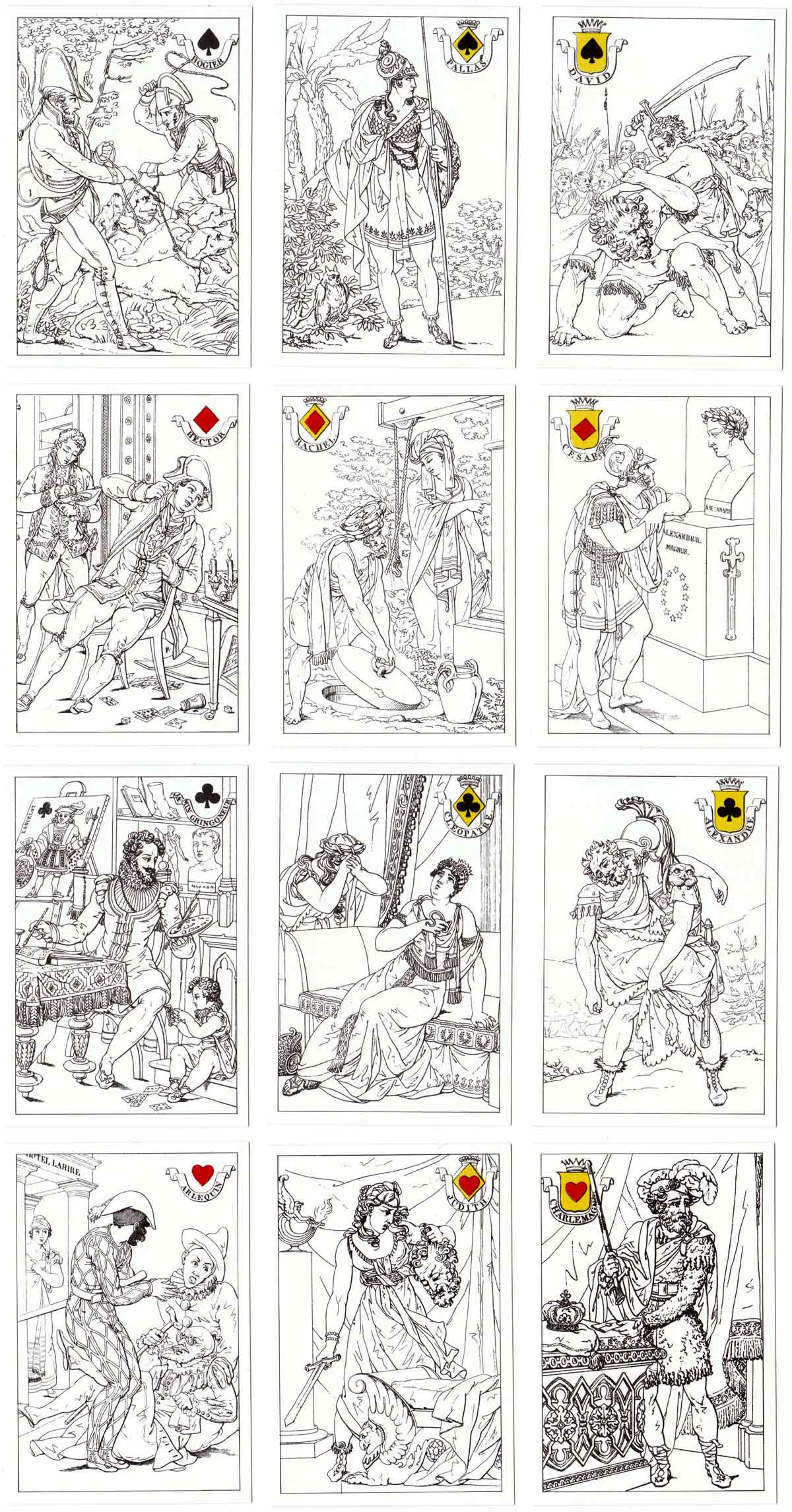
Above: cards from a reproduction of an original deck in the National Playing Card Museum, Turnhout (Belgium) published in 1996. All images courtesy Rex Pitts.
By Rex Pitts (1940-2021)
United Kingdom • Member since January 30, 2009
Rex's main interest was in card games, because, he said, they were cheap and easy to get hold of in his early days of collecting. He is well known for his extensive knowledge of Pepys games and his book is on the bookshelves of many.
His other interest was non-standard playing cards. He also had collections of sheet music, music CDs, models of London buses, London Transport timetables and maps and other objects that intrigued him.
Rex had a chequered career at school. He was expelled twice, on one occasion for smoking! Despite this he trained as a radio engineer and worked for the BBC in the World Service.
Later he moved into sales and worked for a firm that made all kinds of packaging, a job he enjoyed until his retirement. He became an expert on boxes and would always investigate those that held his cards. He could always recognize a box made for Pepys, which were the same as those of Alf Cooke’s Universal Playing Card Company, who printed the card games. This interest changed into an ability to make and mend boxes, which he did with great dexterity. He loved this kind of handicraft work.
His dexterity of hand and eye soon led to his making card games of his own design. He spent hours and hours carefully cutting them out and colouring them by hand.

Leave a Reply
Your Name
Just nowRelated Articles
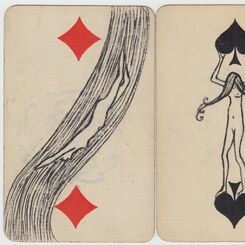
Nine art-nouveau transformation playing cards
by an unknown artist
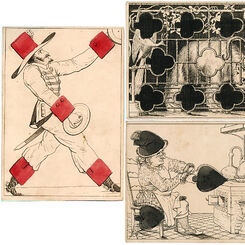
Baron Louis Atthalin’s Transformation Playing Cards, 1817
Baron Louis Atthalin (1784-1856) designed these cards whilst on a sea crossing from Palermo to Marse...

Jeu de Quaternes ‘Rizá’
Jeu de Quaternes ‘Rizá’
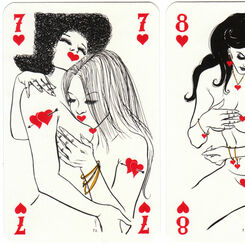
Eroticartes
Eroticartes with drawings by Pino Zac, 1983.

La Belle au bois dormant
Sleeping Beauty card game published in France, c.1980s.
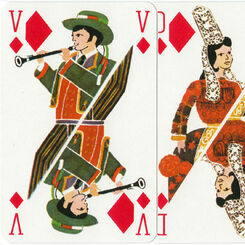
Bretagne
Bretagne (Brittany) playing cards, Grimaud, c.1970.

Jeu de Memoire
Jeu de Memoire card game promoting Véritable Chaumes cheese from the village of St Antoines in south...
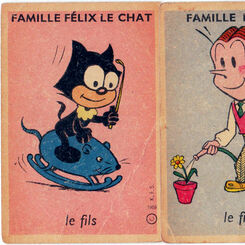
Jeu des 7 Familles
Jeu des 7 Familles © K.F.S. Opera Mundi c.1960.

Velux
Velux - la fenêtre de toit de qualité, c.1990.
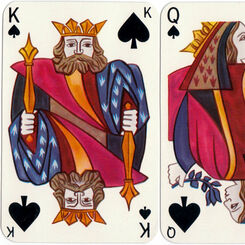
Classique
“Classique” by Draeger Frères, Paris, c.1949 with designs reminiscent of early French cards.
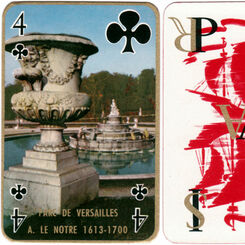
Paris Scenes
“Paris Story” playing cards published by Éditions Philibert, c.1957, showing photographic scenes of ...

Cartes à Rire
Transformed playing cards featuring satirical caricatures of political figures then in the ascendant...
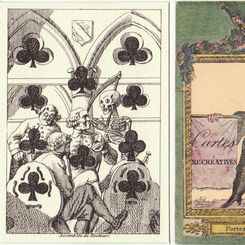
Cartes Recréatives
Cartes Recréatives is a set of Transformed playing cards designed by Armand-Gustave Houbigant (1790-...

Under the Sea
“Under the Sea” transformation playing cards, published in 2005 to raise money for the Marine Stewar...

Philips Sept Familles
“Philips Sept Familles” promotional happy families game from the 1970s

Chamborama
This “Jeu de Familles” from the 1960s designed by Jean Bachès promotes Chambord glassware.
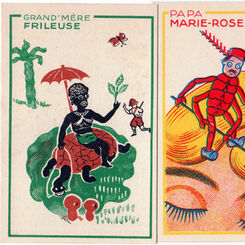
Laboratoires Modernes
Happy Families game by “Laboratoires Modernes” promoting herbal products, c.1929
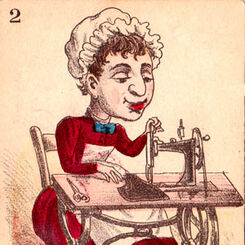
Mauclair Dacier Familles
This “Jeu de Sept Familles” was produced by Mauclair Dacier in the late 19th century.
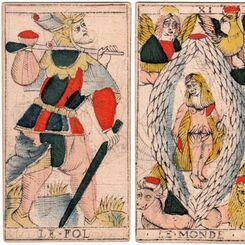
Charles Cheminade Tarot
Marseille Tarot cards by Charles Cheminade of Grenoble, France, early 18th century.
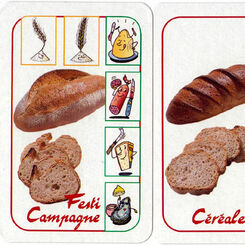
Festival des Pains
Festival des Pains Artisan Boulanger (Artisan Bread Festival), c.2003.
Most Popular
Our top articles from the past 60 days


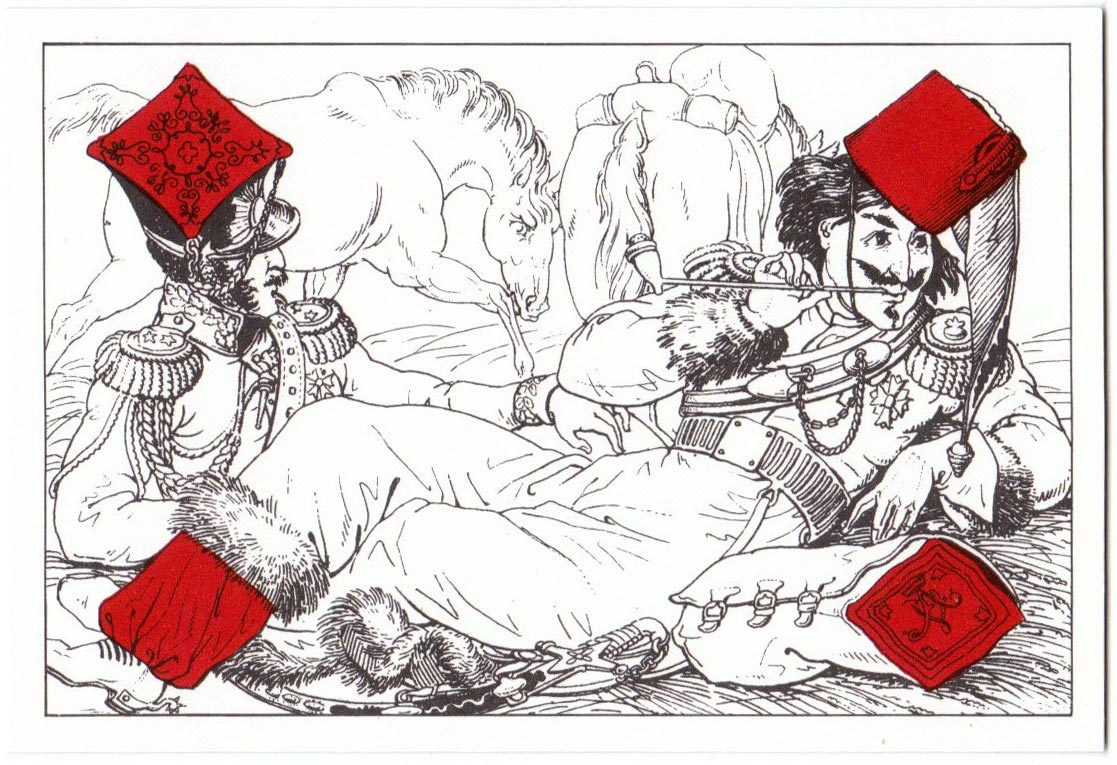
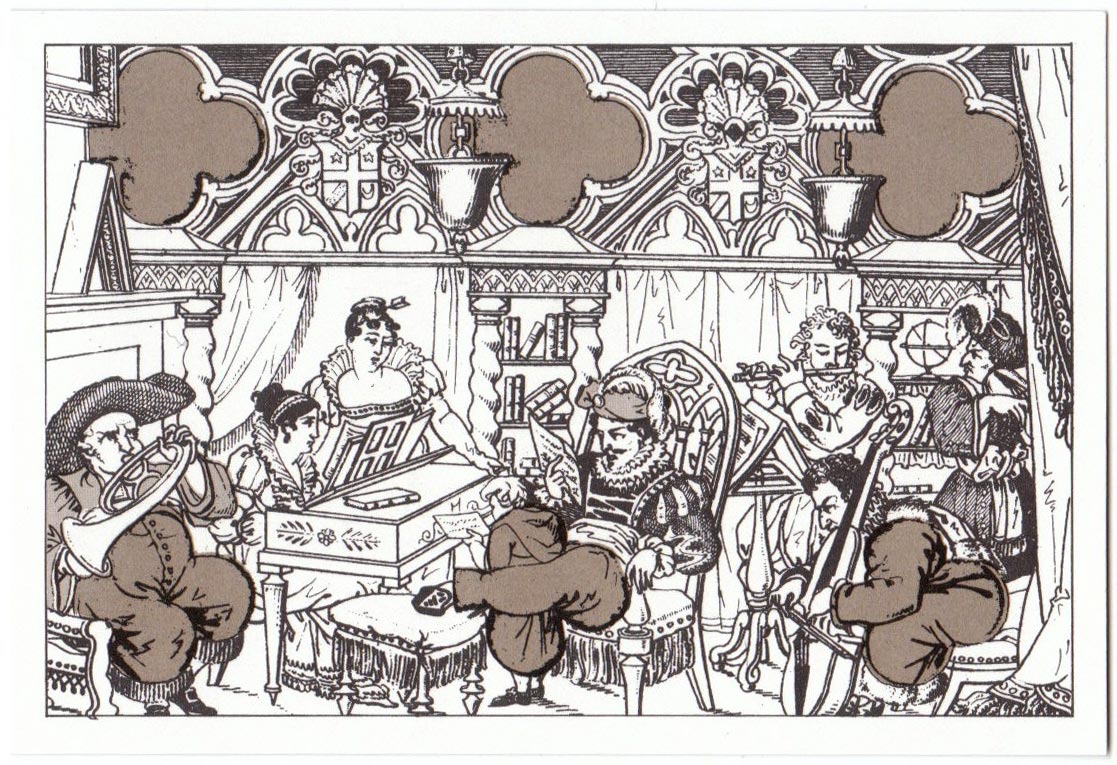
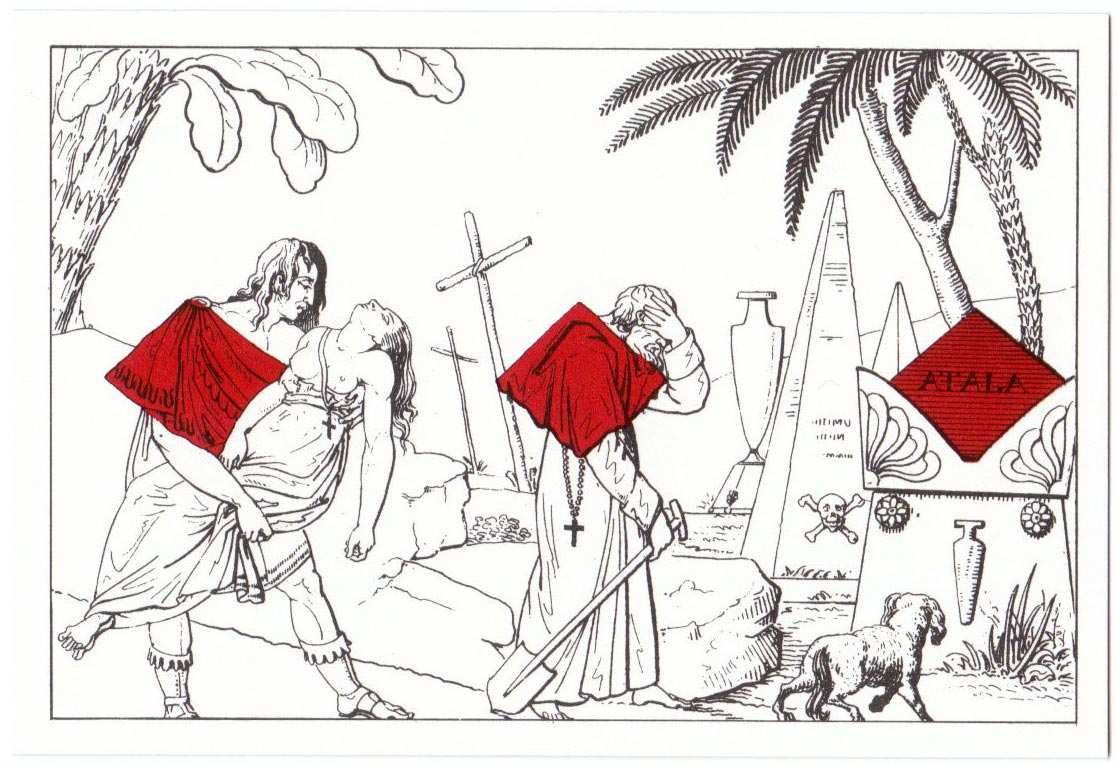
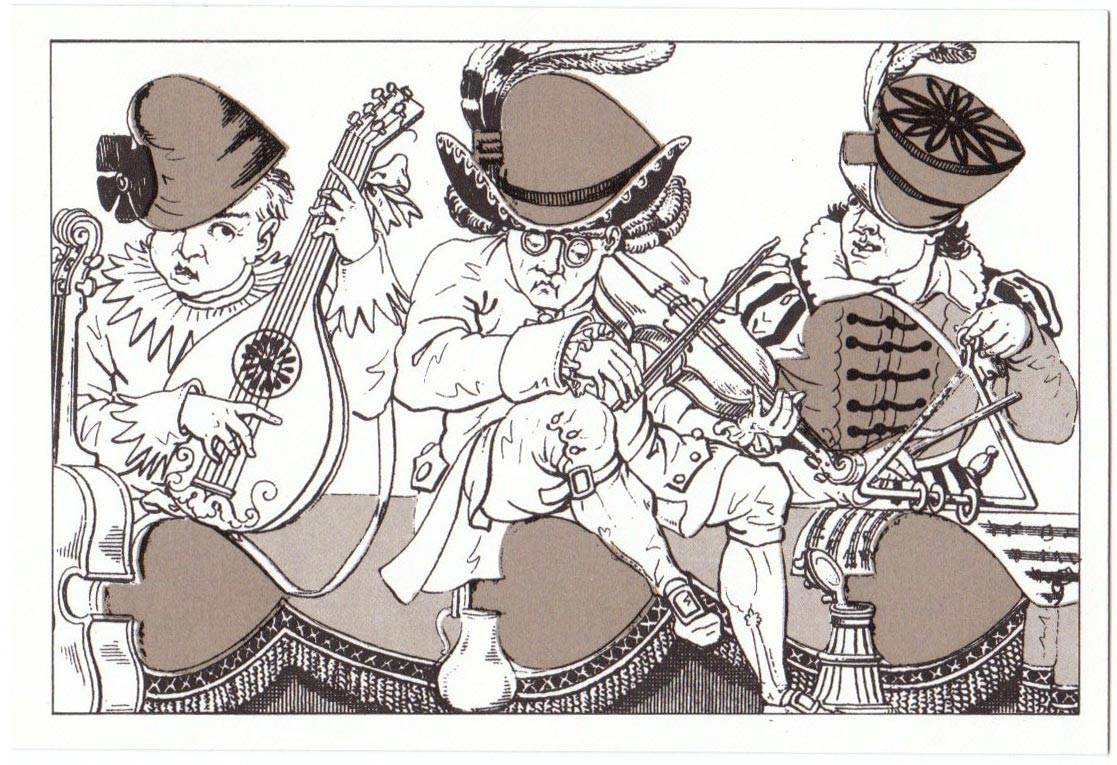
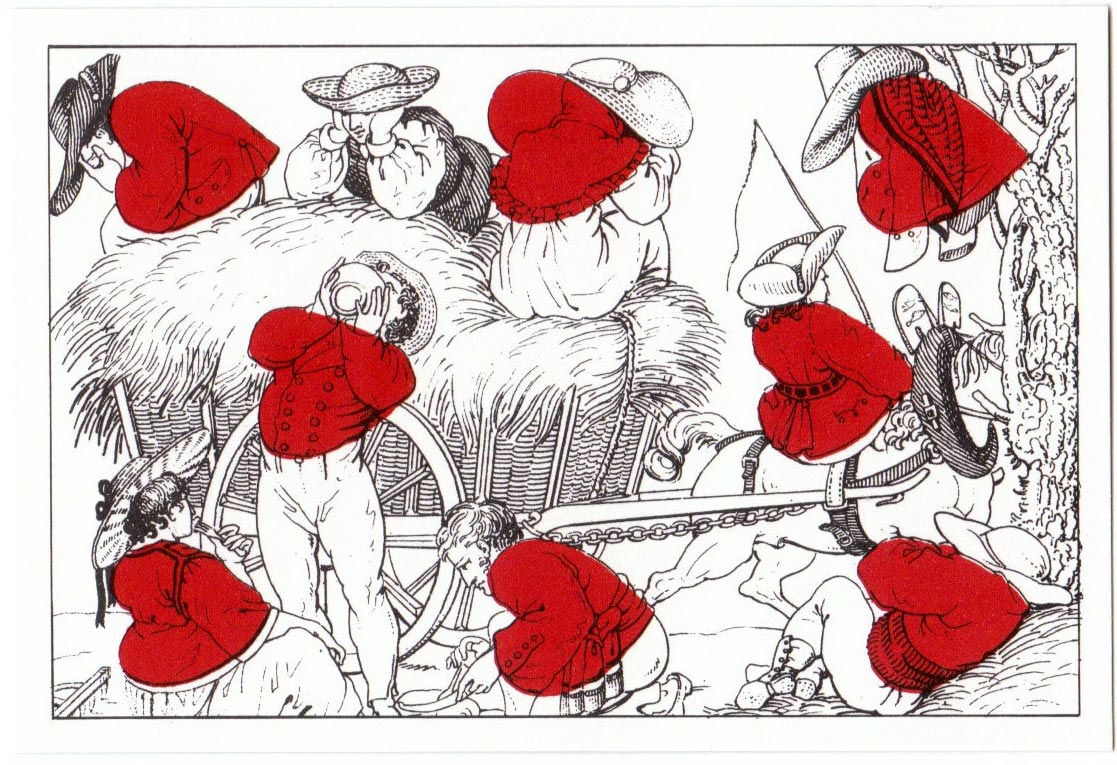
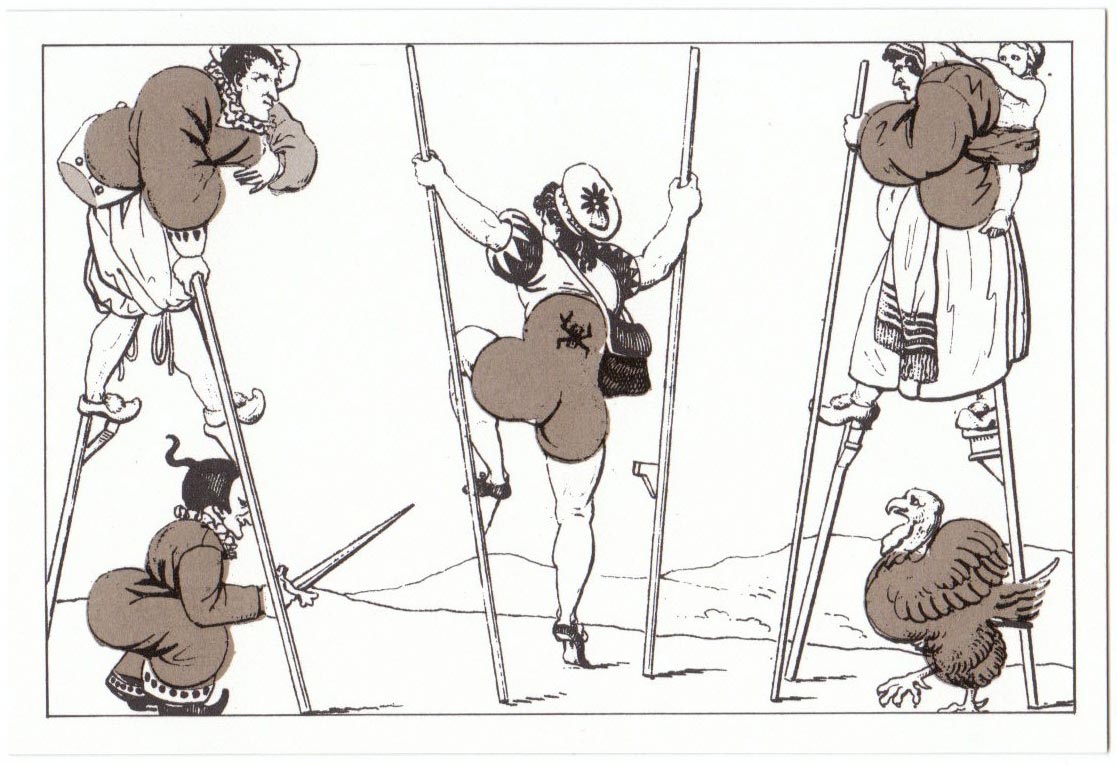

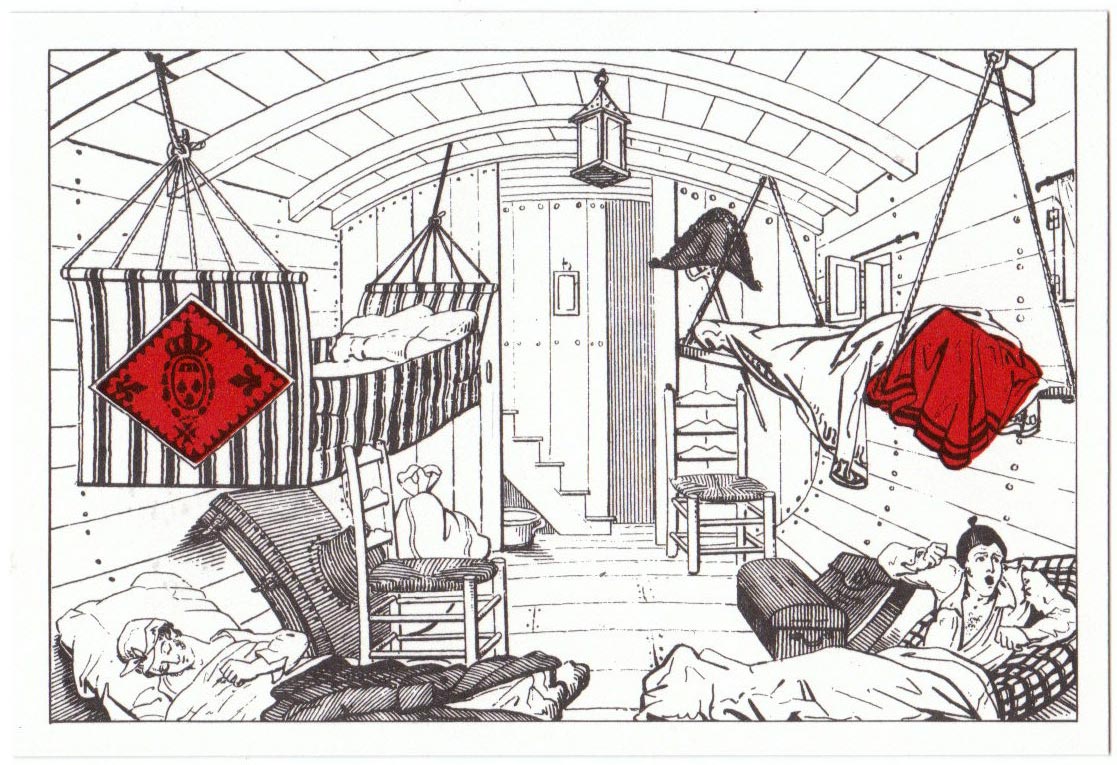
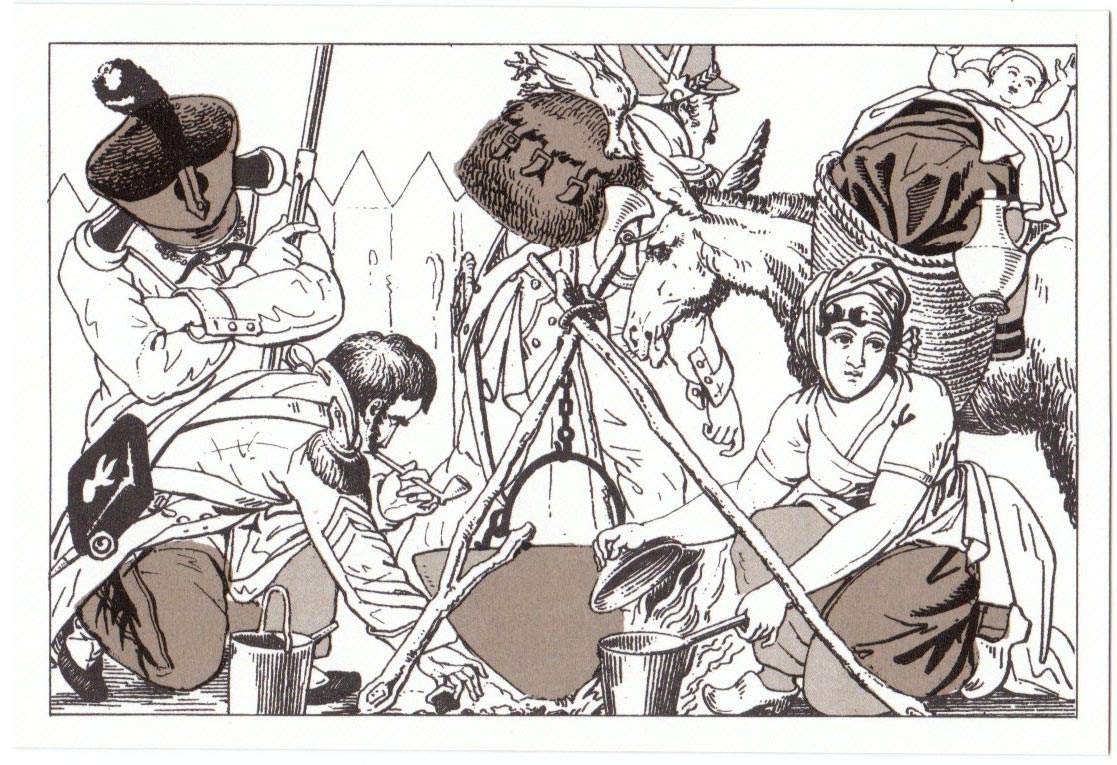
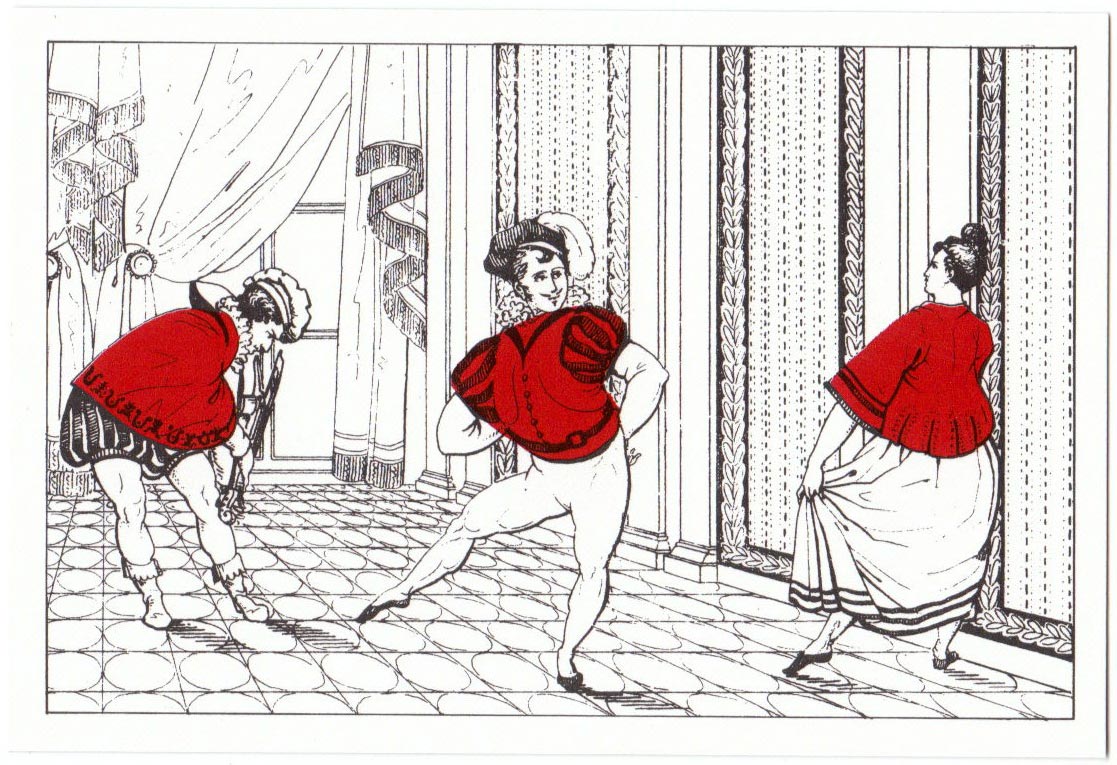
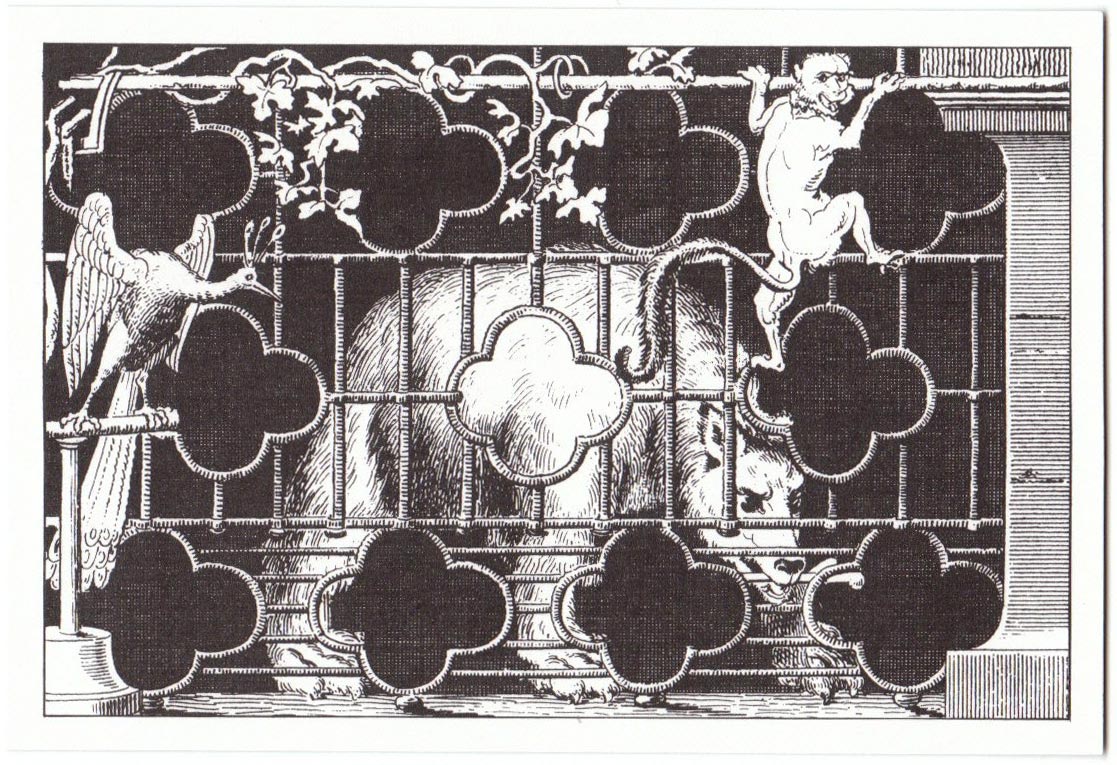
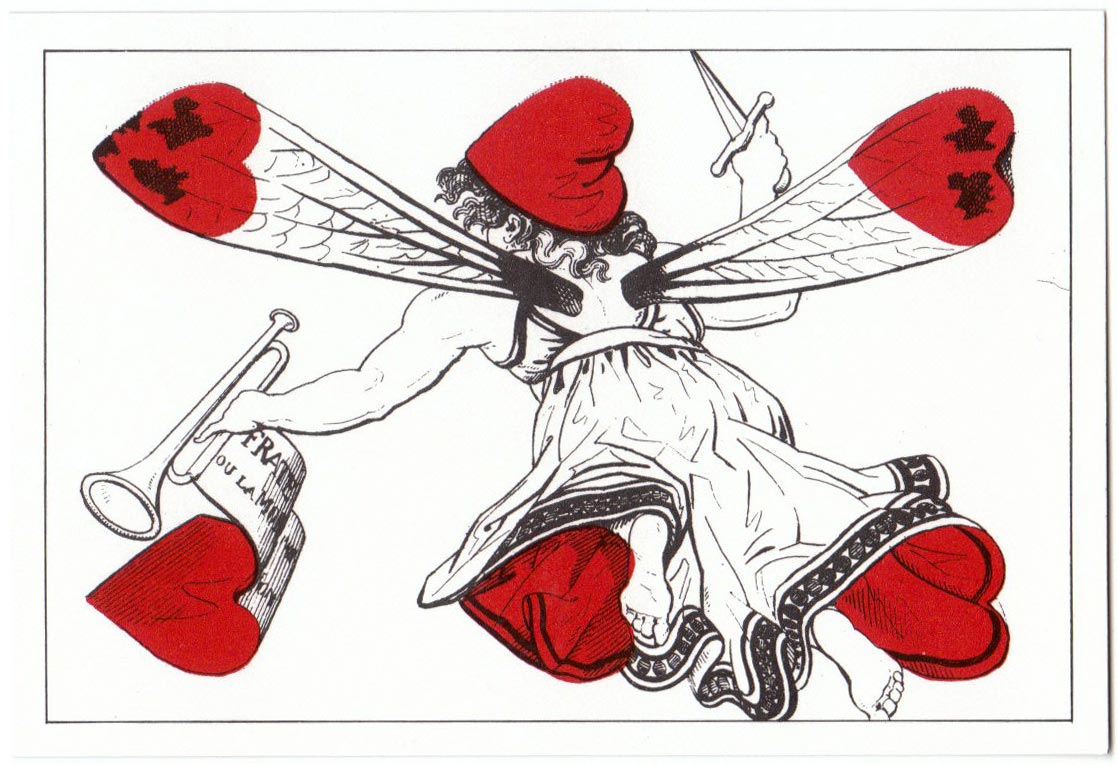
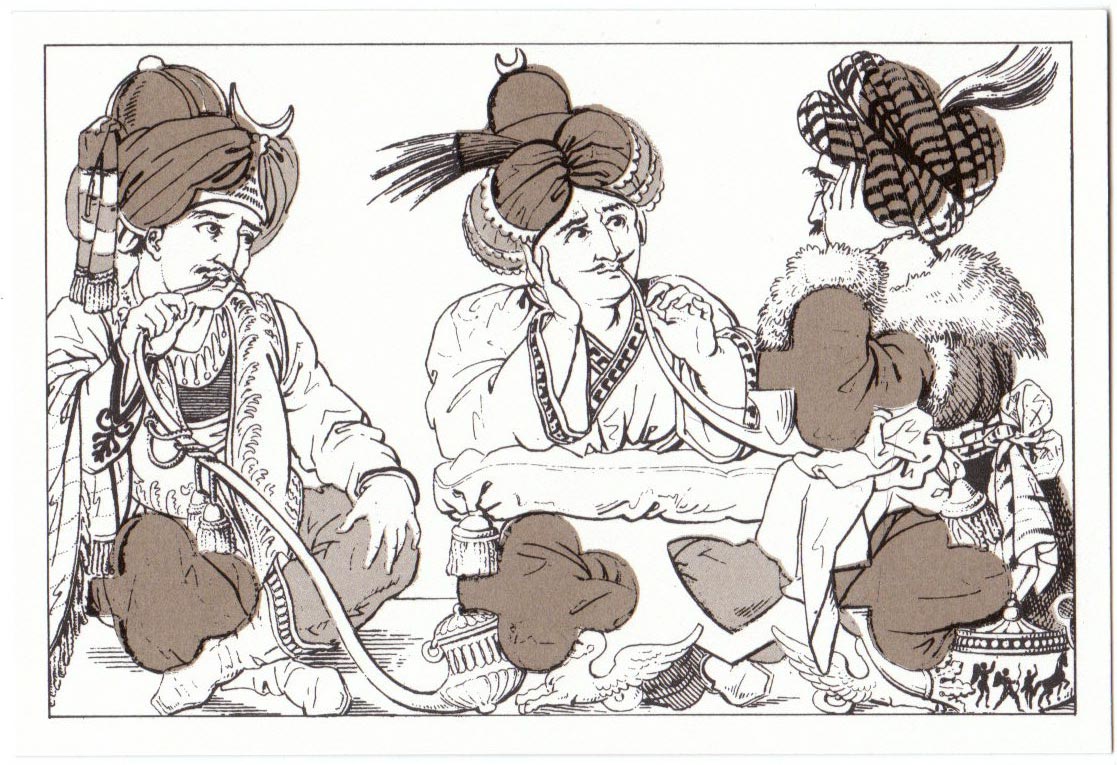
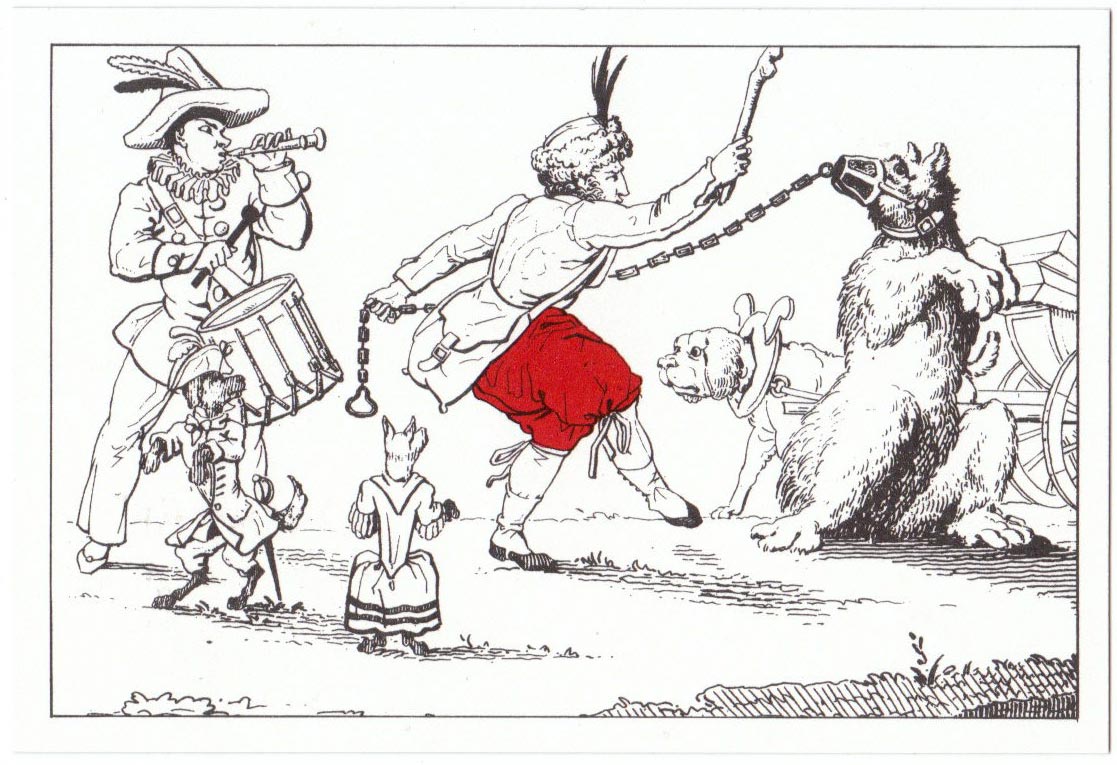
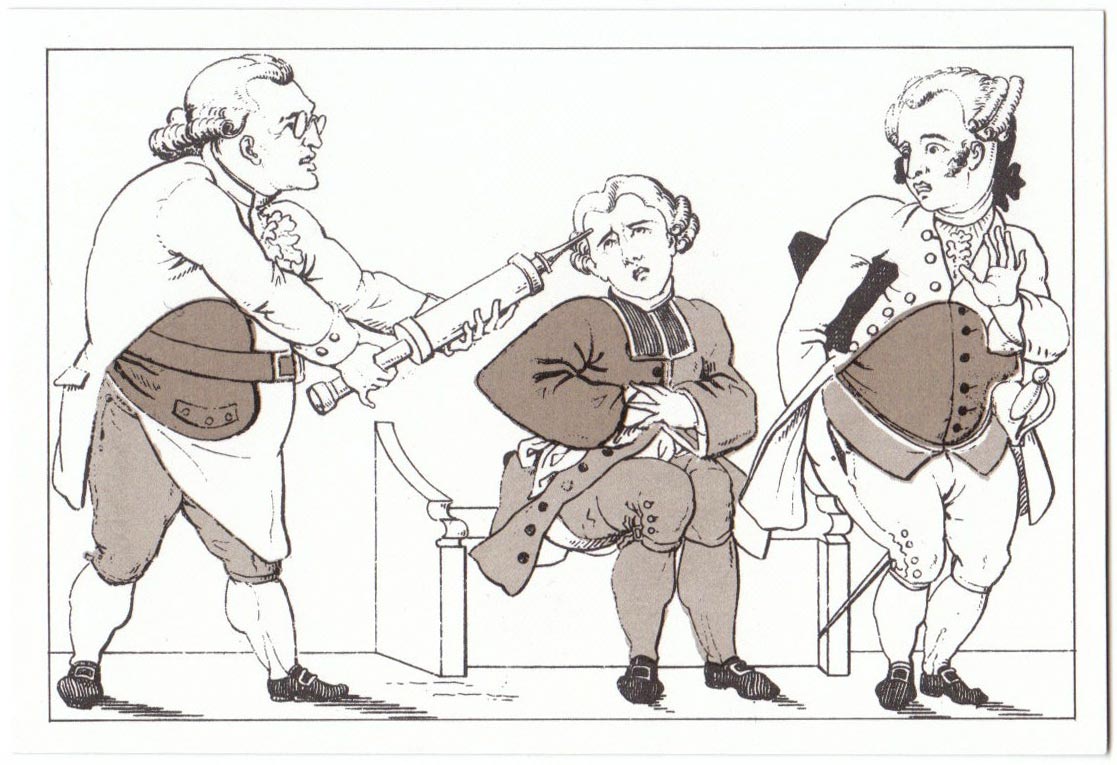
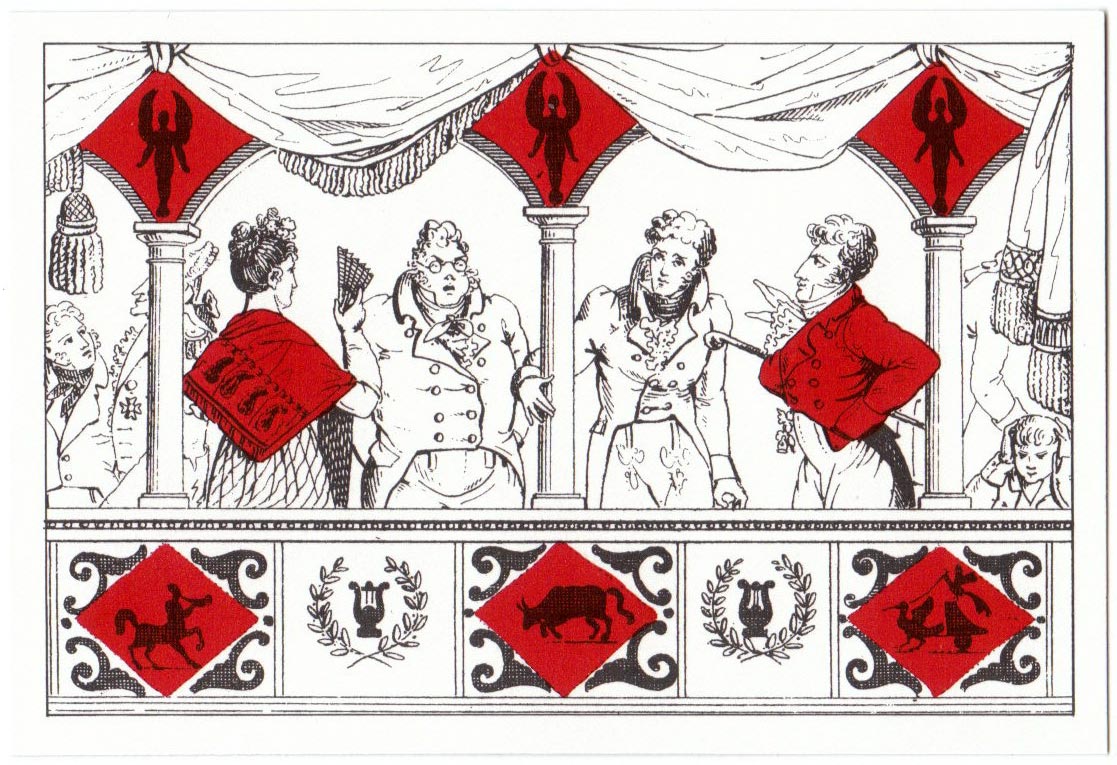
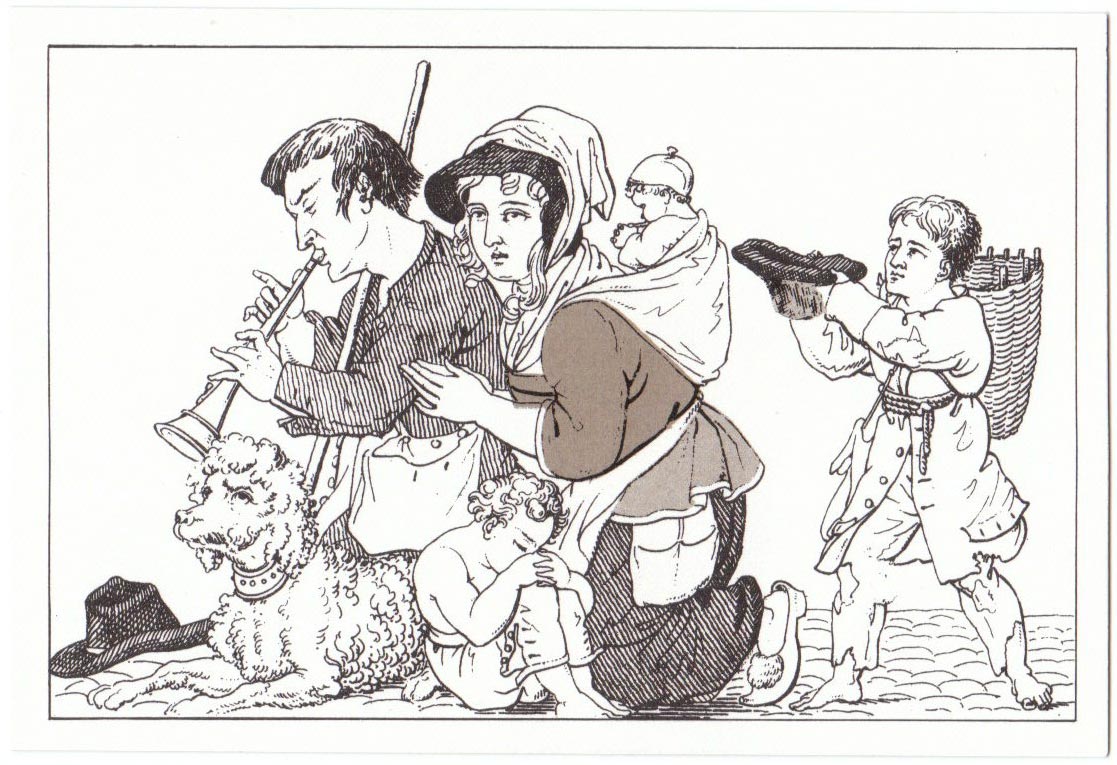
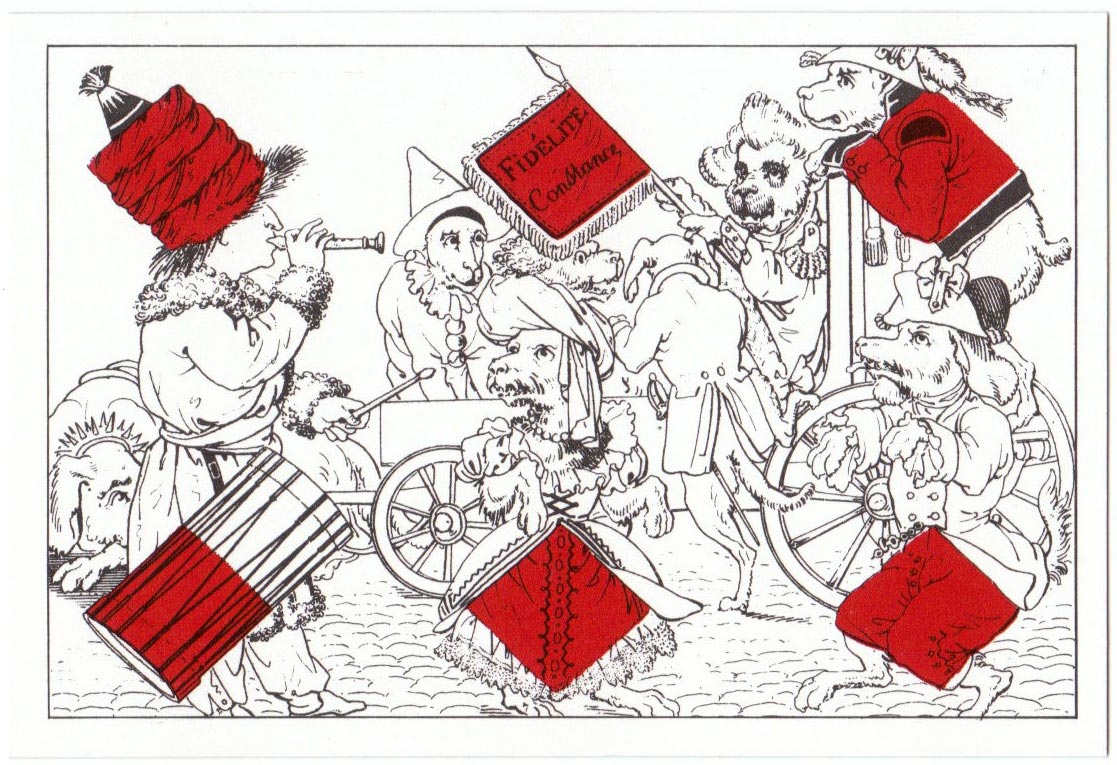
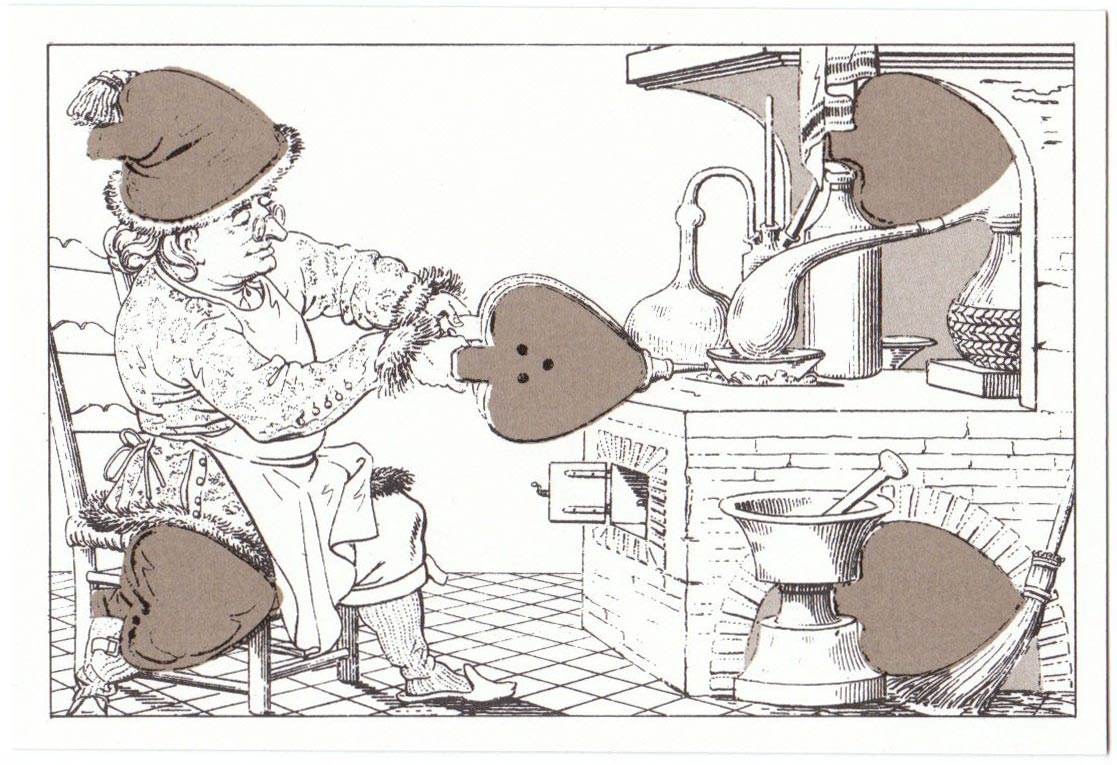
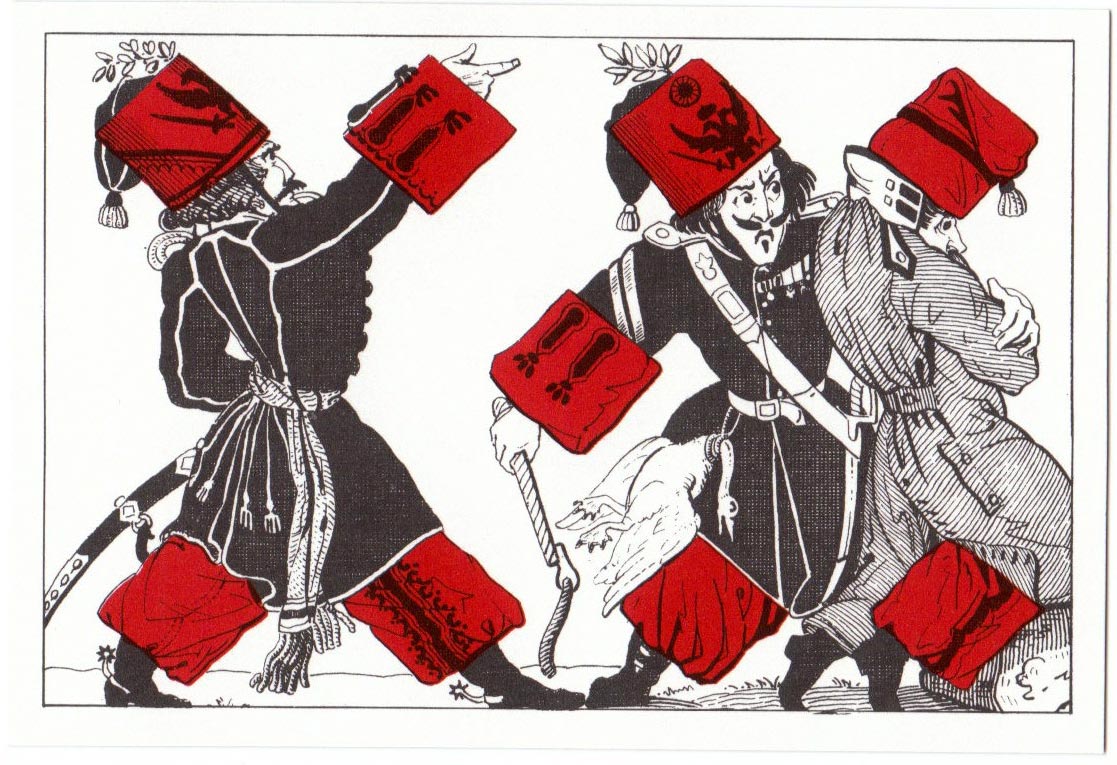
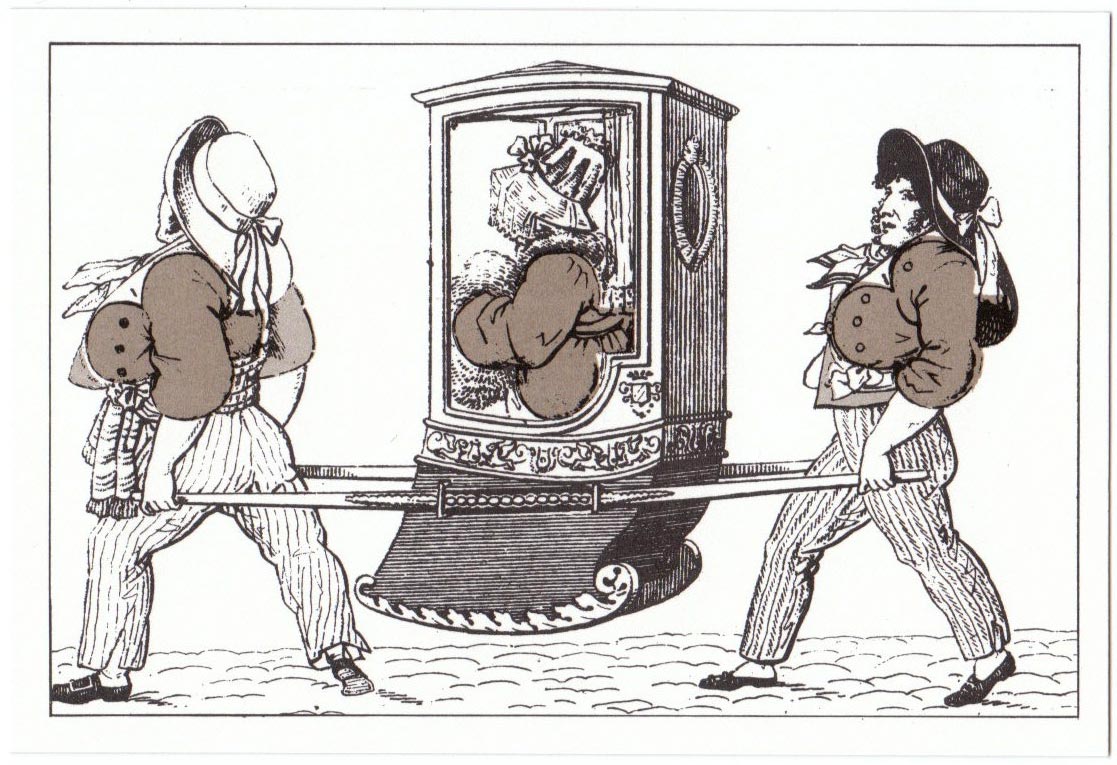
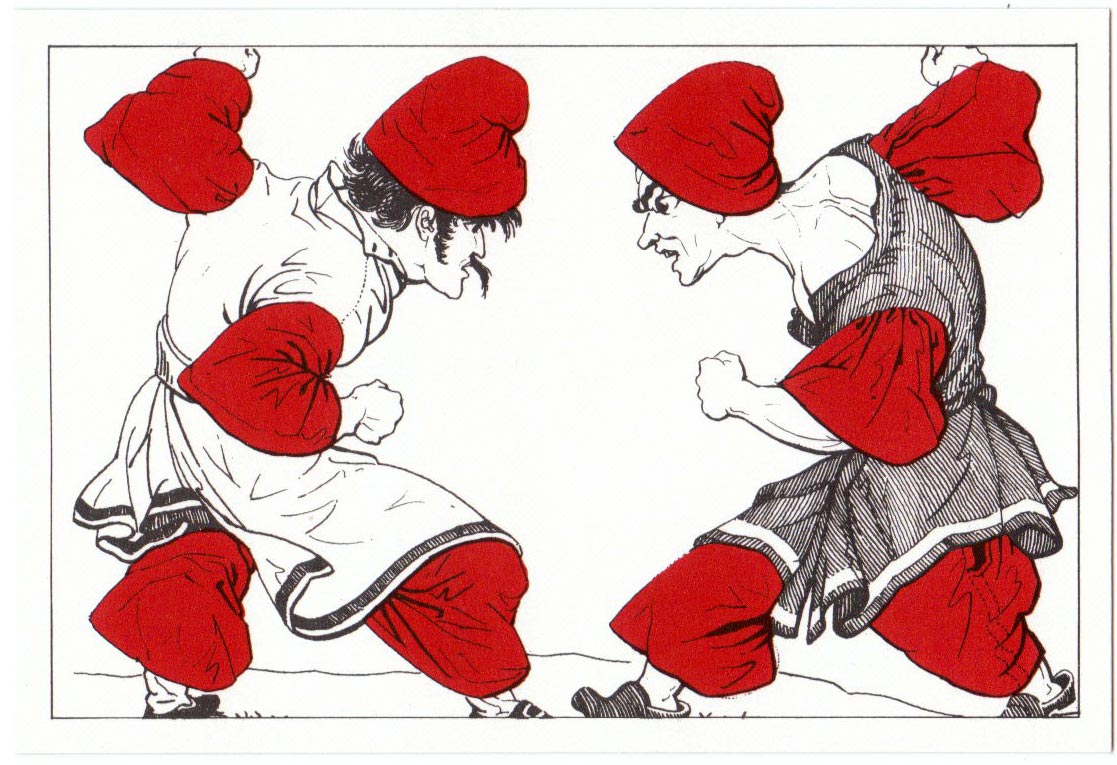
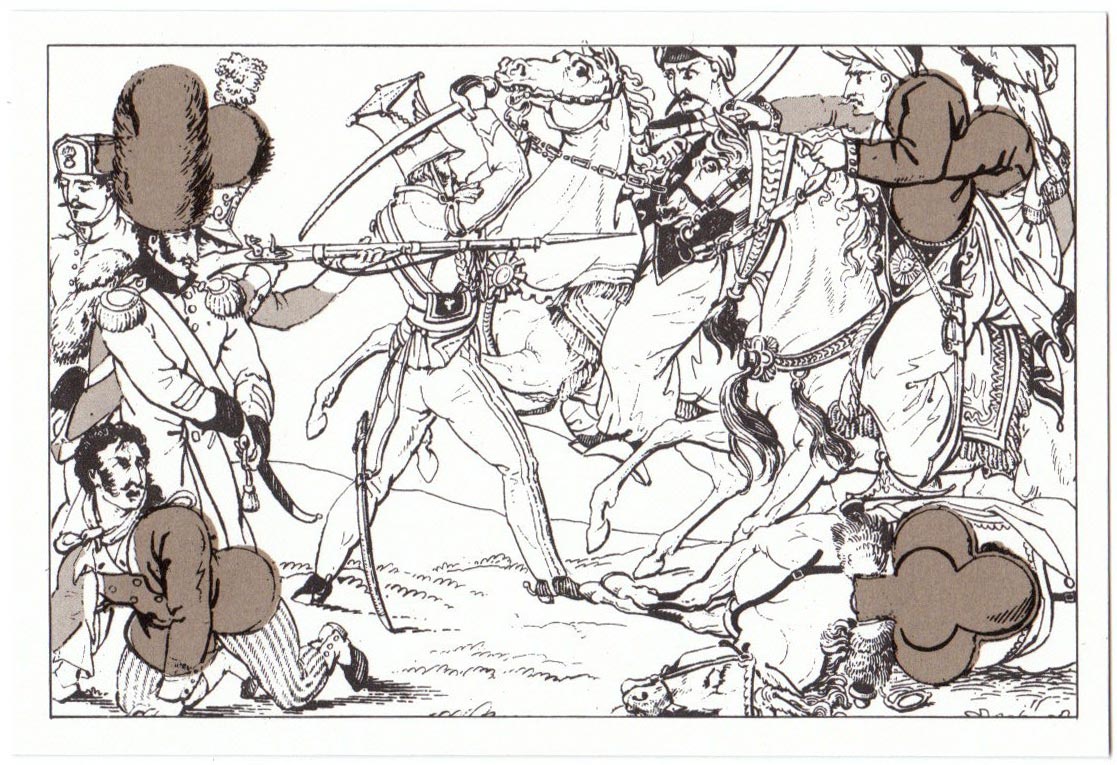
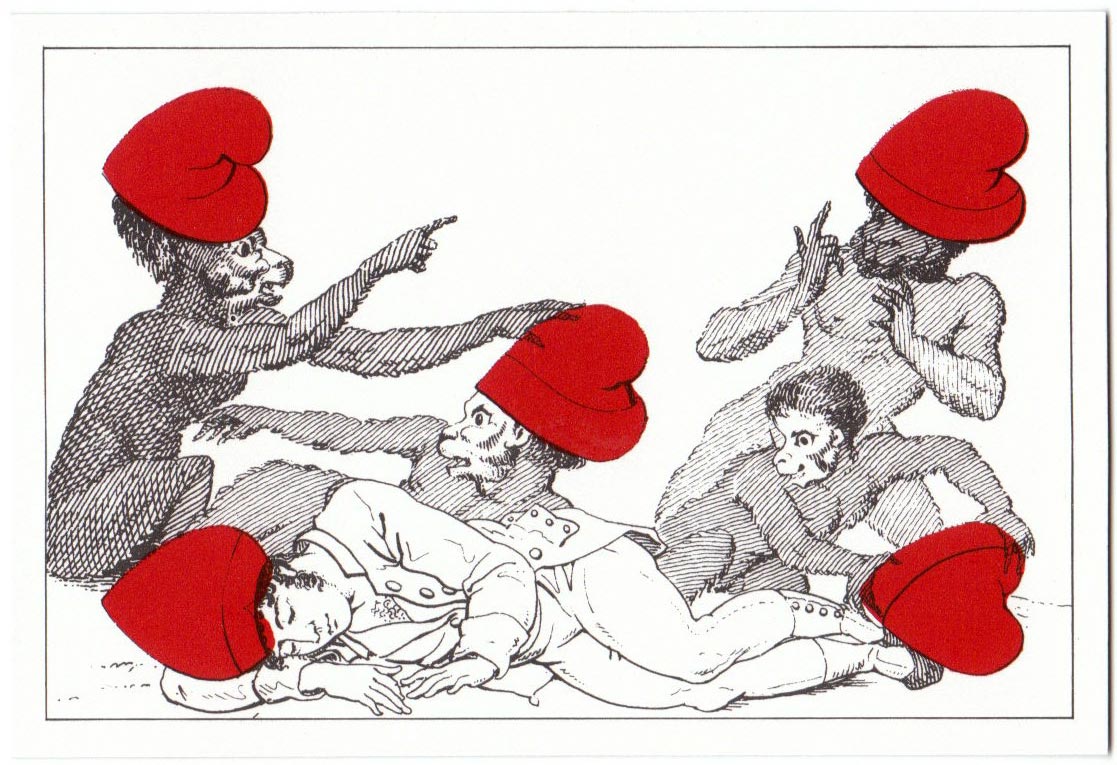
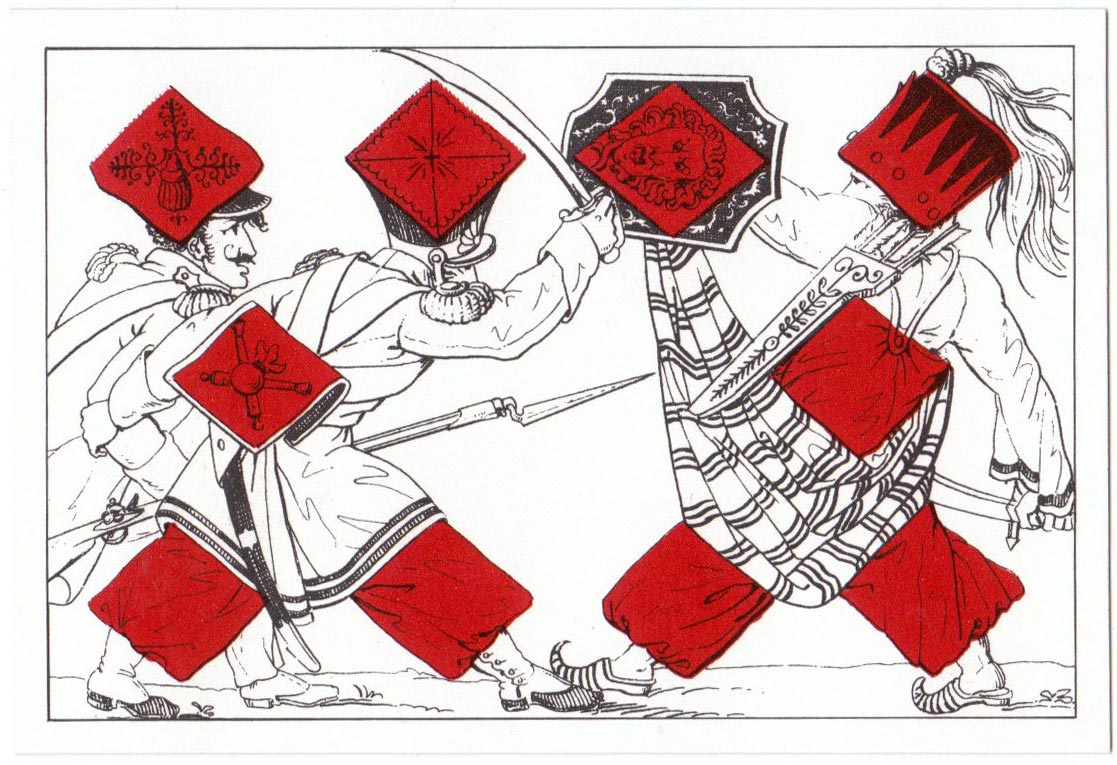

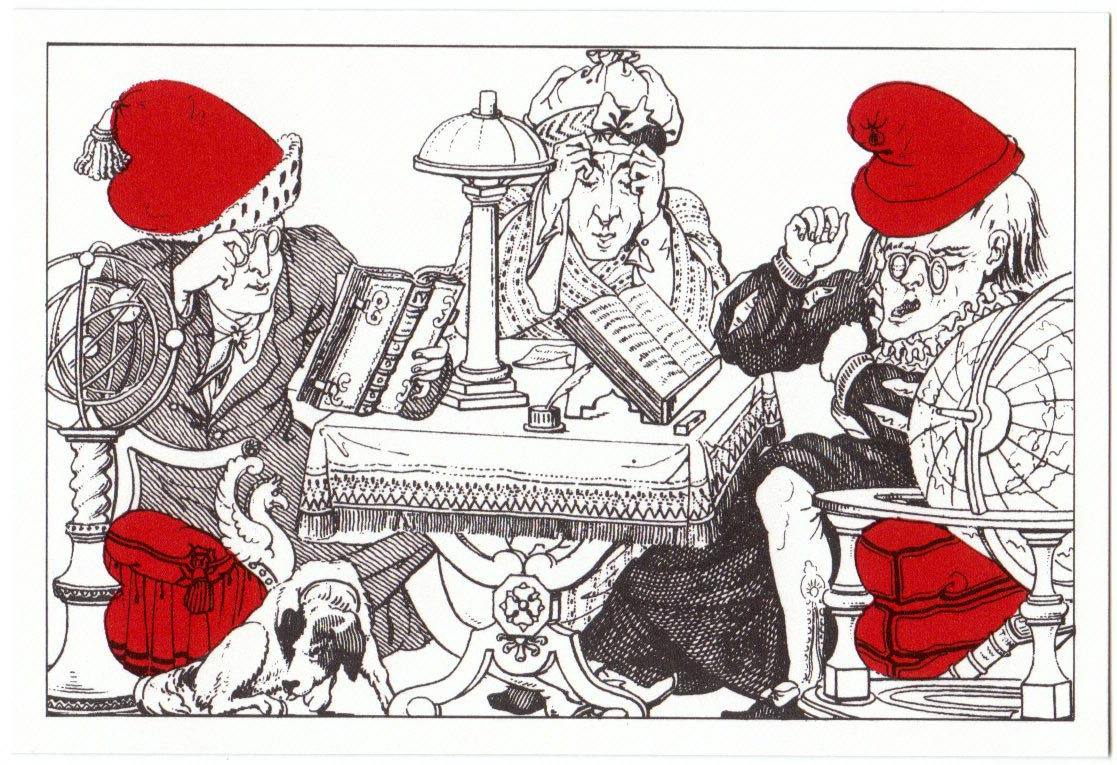
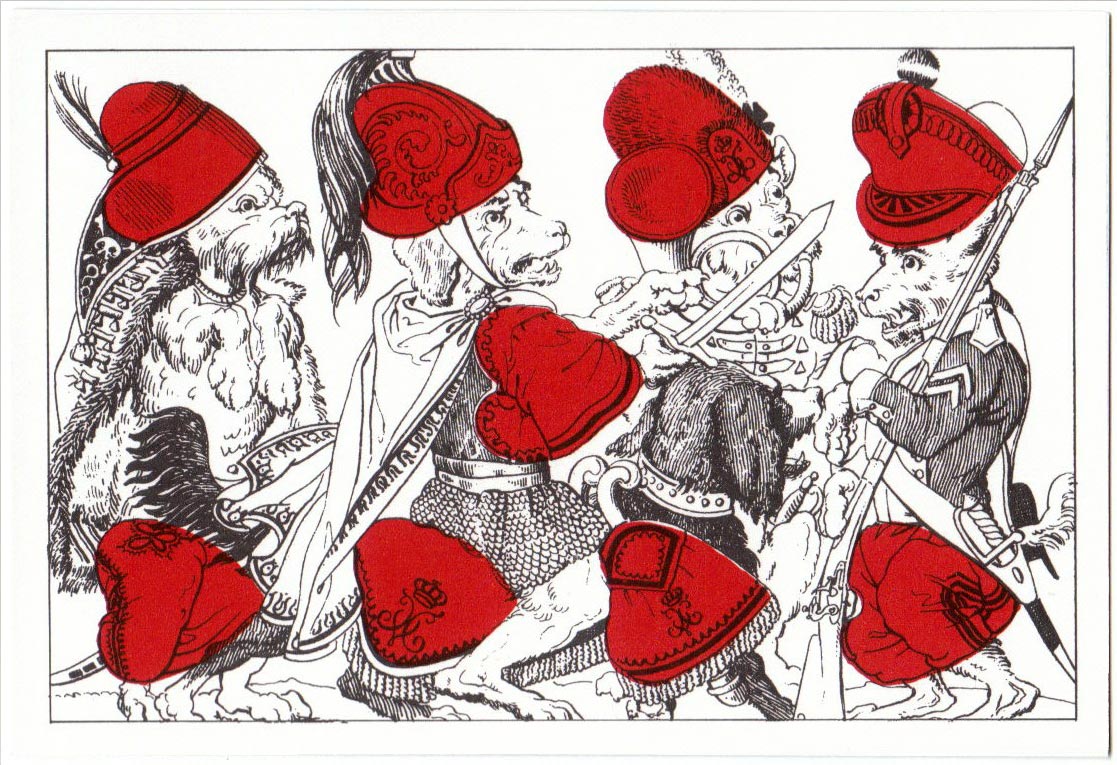
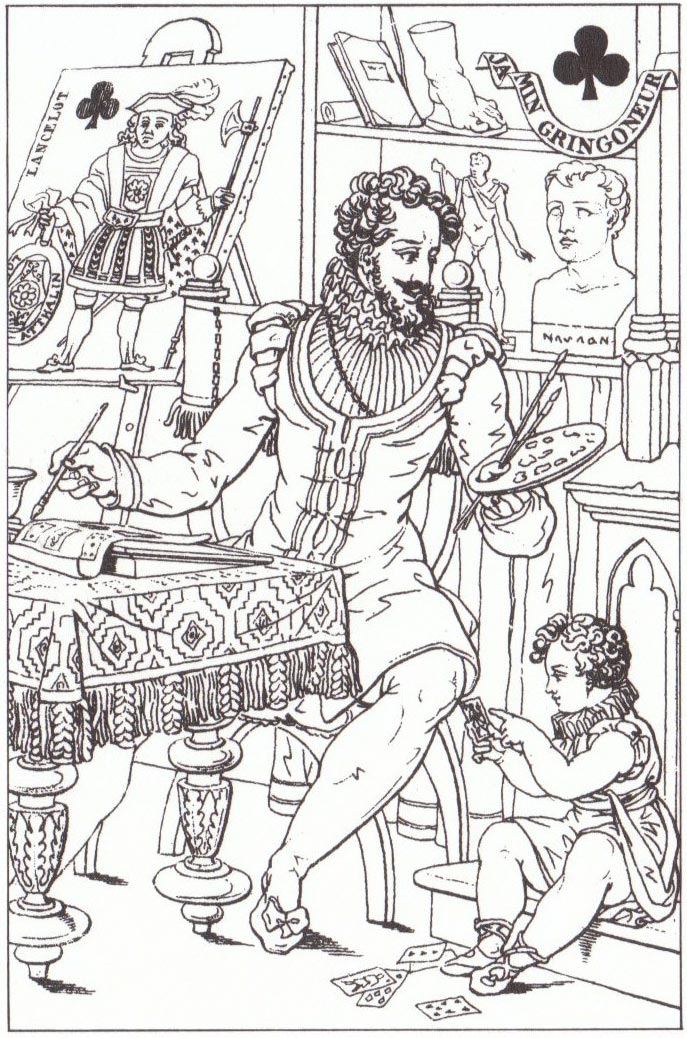
 Your comment here. Your comment here. Your comment here. Your comment here. Your comment here. Your comment here. Your comment here. Your comment here. Your comment here. Your comment here. Your comment here. Your comment here. Your comment here. Your comment here. Your comment here. Your comment here. Your comment here. Your comment here. Your comment here. Your comment here. Your comment here. Your comment here. Your comment here. Your comment here. Your comment here. Your comment here. Your comment here. Your comment here. Your comment here. Your comment here. Your comment here. Your comment here.
Your comment here. Your comment here. Your comment here. Your comment here. Your comment here. Your comment here. Your comment here. Your comment here. Your comment here. Your comment here. Your comment here. Your comment here. Your comment here. Your comment here. Your comment here. Your comment here. Your comment here. Your comment here. Your comment here. Your comment here. Your comment here. Your comment here. Your comment here. Your comment here. Your comment here. Your comment here. Your comment here. Your comment here. Your comment here. Your comment here. Your comment here. Your comment here.




















